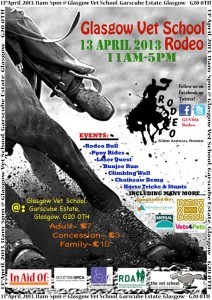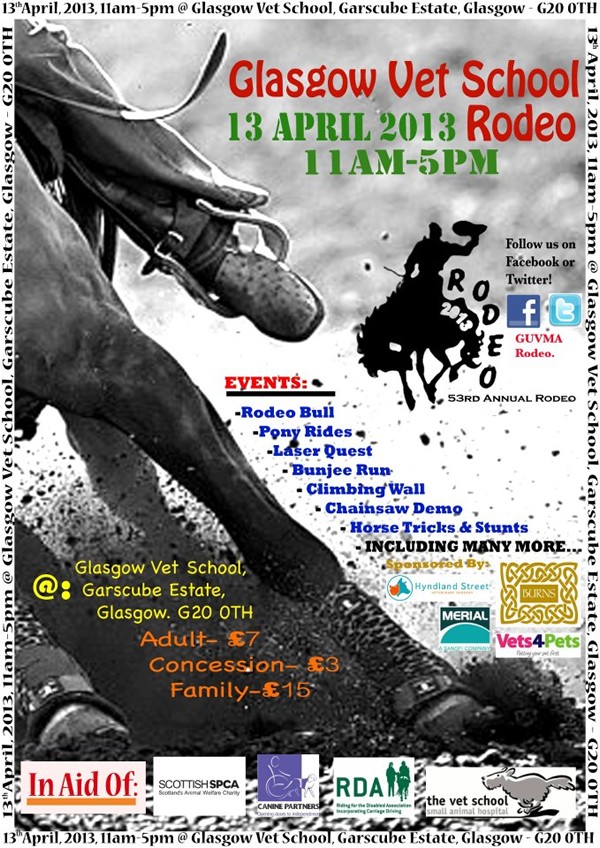With pre-exam stress in full swing for most of us, we welcomed a break in the form of the Glasgow Vet School Rodeo last weekend. The annual charity event took place for the 53rd time this year.

Traditionally (from what I can gather), it used to be somewhat like a country show, with stock showing, sheep herding and the like. Now, it’s more of a family day out with many displays and stalls of different natures, though all loosely animal-related.
Entertainment throughout the day included displays such as falconry, duck herding and dog sledding. There was have-a-go dog agility and dog showing for the public to enter their pets into. For the children, there were pony rides, bouncy castles, laser quest and a climbing wall. Of course, there was a marquee full of craft stalls and all sorts of different tombola and raffle stands supporting various animal related charities.
The proceeds from the entry tickets and the main raffle went towards four key charities: The Riding for the Disabled Association, Canine Partners, The Scottish Society for the Prevention of Cruelty to Animals (Scottish SPCA) and The Vet Fund (James Herriot Scholarship Fund). In addition to these, many other animal and breed-specific charities had their own stalls.
It is a vet school tradition that first years “volunteer” on the day. My friend and I spent the morning helping out on the “small animal” stand – there were a selection of small furries including rabbits, hamsters, mice and guinea pigs available for the public (mainly children) to handle. Our role was to help get the animals out of their cages and make sure there were no escapees. Other than my small disagreement with a rat (it sank its teeth into my finger in response to being picked up), we enjoyed our time chatting to people and brushing up on our handling skills.
In true Glasgow style, the day ended with a ceilidh – a great day and evening was had by all of us at the vet school!










